This post is an introduction to sets as mathematical objects. It is based on the book Introduction to Topology of Menselson [1]. It aims to give a visual introduction to sets theory.
Roughly speaking, a set is an ensemble of objects. Let be an object. If belongs to , we will note and if does not belong to , we will note . We will also note the set that contains the objects . The set that has no member is called to null (or empty) set and noted .
Figure 1: Sets
When all objects of a set also belongs to a set , we say that is a subset of and we note . Note that a set is always contained in itself and the same is true for the empty set , these are improper subsets. Others subsets are called proper subsets.
Figure 2: Sets inclusion
To compare multiple sets, we compare their elements. To show the equality of sets, it is usually a good idea to prove that each set is contained in each other.
Sets are also objects.
Power sets
The power set of , noted or , is a set that is the collection of all subsets of . For each set , the set if and only if .
Figure 3: Power sets
Some comments about sets:
For each set , by definition but as the elements of do not belong to . However, the set because all the elements of , and , are in .
For each set , by definition and as the elements of (there are none) are included in .
Consider and . If and , then .
Figure 4: Multiple sets inclusion
Intersection, Union and Complement
Let and be two sets. The set that contains elements that belongs to and to is the intersection of and and is denoted by . The set that contains elements that belongs to or is the union of and and is denoted by .
Intersection
Union
Figure 5: Intersection and Union
The complement of a set is the set of elements that belong to but not to . It is denoted by . As is a set, we can take its complement and recover .
Figure 6: Complement
DeMorgan’s laws
DeMorgan’s laws are relations between the complement of the intersection of and (or the union) and the union of the complement of and the complement of (or the intersection of the complements). Mathematically, this is written, for and two sets:
Figure 7: Visual proof for the complement of the intersection
Figure 8: Visual proof for the complement of the union
References:
[1] Mendelson, B., 2012. Introduction to Topology: Third Edition. Courier Corporation.
---title: Setsauthor: Steven Golovkinedate: '2023-11-11'categories: ['Topology']description: | A visual introduction to sets.image: "../../posts/sets/logo.jpg"image-alt: | A square logo of sets created with DALL-E3.---This post is an introduction to sets as mathematical objects. It is based on the book *Introduction to Topology* of Menselson [1]. It aims to give a visual introduction to sets theory.Roughly speaking, a set $S$ is an ensemble of objects. Let $x$ be an object. If $x$ belongs to $S$, we will note $x \in S$ and if $x$ does not belong to $S$, we will note $x \notin S$. We will also note $\{x_1, \dots, x_n\}$ the set that contains the objects $x_1, \dots, x_n$. The set that has no member is called to *null* (or *empty*) set and noted $\emptyset$.::: {#fig-sets fit-align="center"}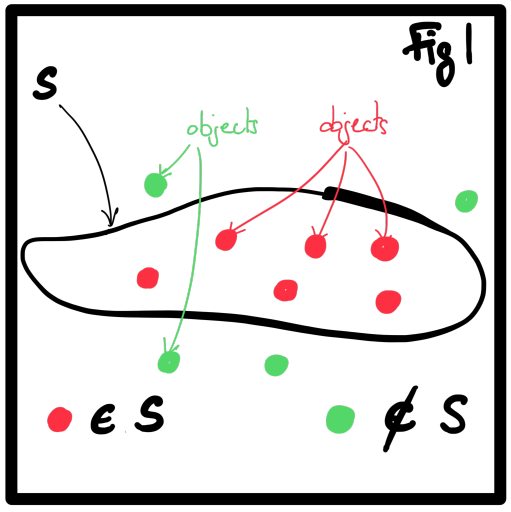{width=200}Sets:::When all objects of a set $A$ also belongs to a set $B$, we say that $A$ is a subset of $B$ and we note $A \subset B$. Note that a set is always contained in itself and the same is true for the empty set $\emptyset$, these are *improper* subsets. Others subsets are called *proper* subsets.::: {#fig-inclusion fit-align="center"}{width=200}Sets inclusion:::To compare multiple sets, we compare their elements. To show the equality of sets, it is usually a good idea to prove that each set is contained in each other.::: {.callout-important appearance="simple"}**Sets are also objects.** :::## Power setsThe power set of $S$, noted $\mathcal{P}(S)$ or $2^S$, is a set that is the collection of all subsets of $S$. For each set $S$, the set $A \in \mathcal{P}(S)$ if and only if $A \subset S$.::: {#fig-power-sets fit-align="center"}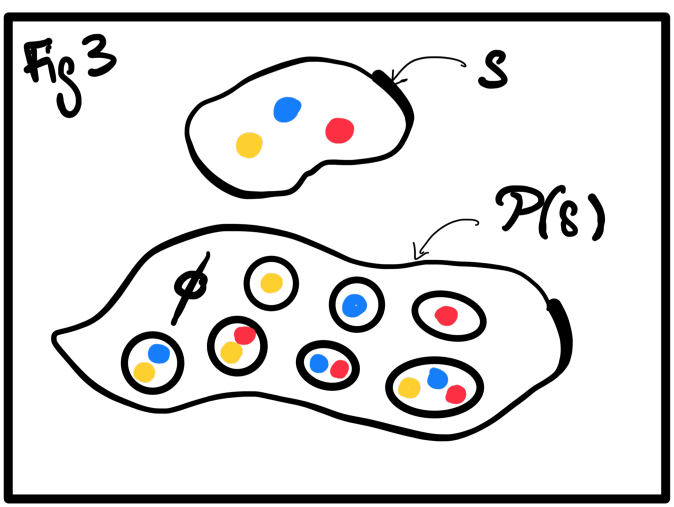{width=200}Power sets:::Some comments about sets:- For each set $S$, $S \in \mathcal{P}(S)$ by definition but $S \not\subset \mathcal{P}(S)$ as the elements of $S$ do not belong to $\mathcal{P}(S)$. However, the set $\{S\} \subset \mathcal{P}(S)$ because all the elements of $\{S\}$, $S$ and $\emptyset$, are in $\mathcal{P}(S)$.- For each set $S$, $\emptyset \in \mathcal{P}(S)$ by definition and $\emptyset \subset \mathcal{P}(S)$ as the elements of $\emptyset$ (there are none) are included in $\mathcal{P}(S)$.- Consider $A, B$ and $C$. If $A \subset B$ and $B \subset C$, then $B \subset C$.::: {#fig-multiple-inclusion fit-align="center"}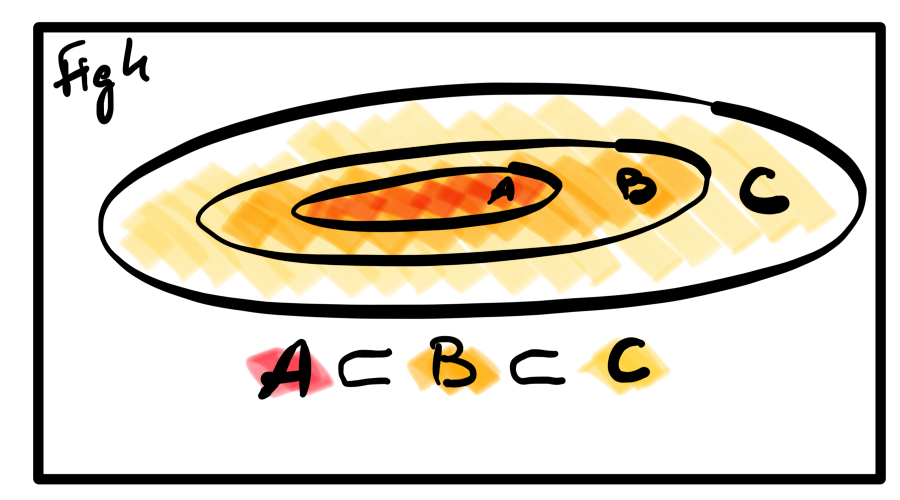{width=200}Multiple sets inclusion:::## Intersection, Union and ComplementLet $A$ and $B$ be two sets. The set that contains elements that belongs to $A$ **and** to $B$ is the intersection of $A$ and $B$ and is denoted by $A \cap B$. The set that contains elements that belongs to $A$ **or** $B$ is the union of $A$ and $B$ and is denoted by $A \cup B$.::: {#fig-inter-union layout-ncol=2}{width=175}{width=200}Intersection and Union:::The complement of a set $A \subset S$ is the set of elements that belong to $S$ but not to $A$. It is denoted by $C(A)$. As $C(A)$ is a set, we can take its complement and recover $A$.::: {#fig-complements fit-align="center"}{width=200}Complement:::## DeMorgan's laws DeMorgan's laws are relations between the complement of the intersection of $A$ and $B$ (or the union) and the union of the complement of $A$ and the complement of $B$ (or the intersection of the complements). Mathematically, this is written, for $A$ and $B$ two sets:- $C(A \cap B) = C(A) \cup C(B)$::: {#fig-visual-inter fit-align="center"}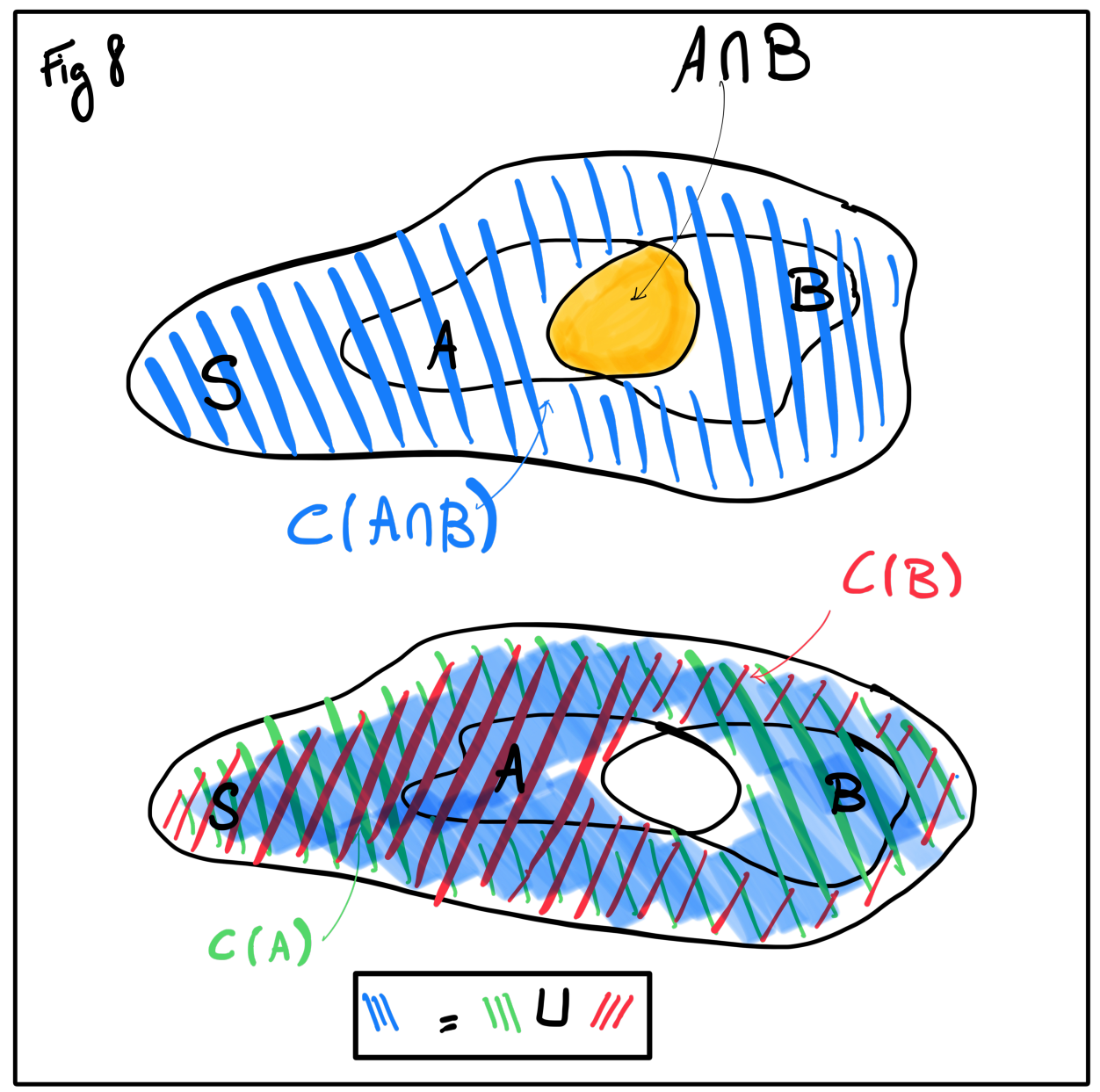{width=400}Visual proof for the complement of the intersection:::- $C(A \cup B) = C(A) \cap C(B)$::: {#fig-visual-union fit-align="center"}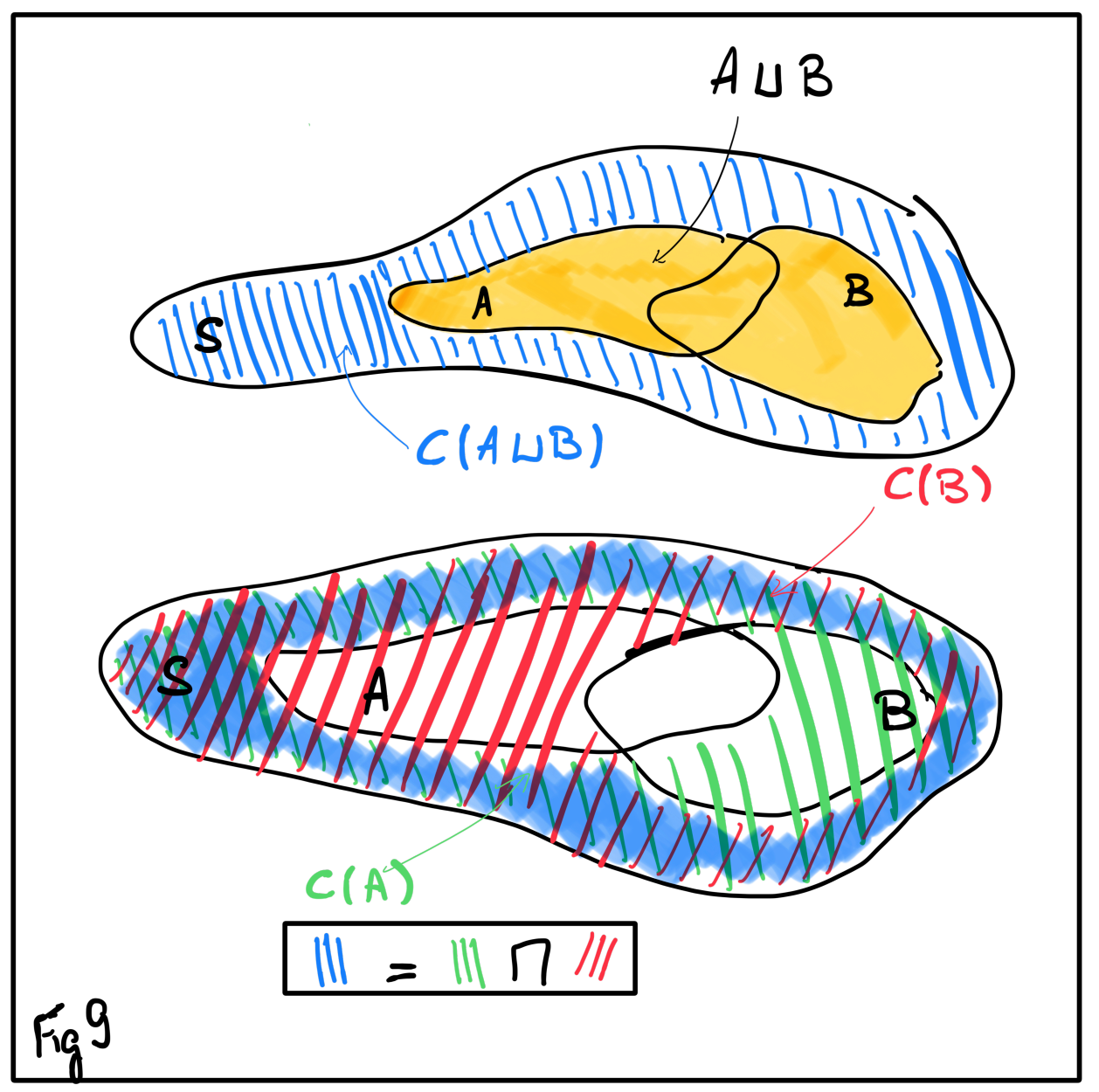{width=400}Visual proof for the complement of the union:::References:[1] Mendelson, B., 2012. Introduction to Topology: Third Edition. Courier Corporation.